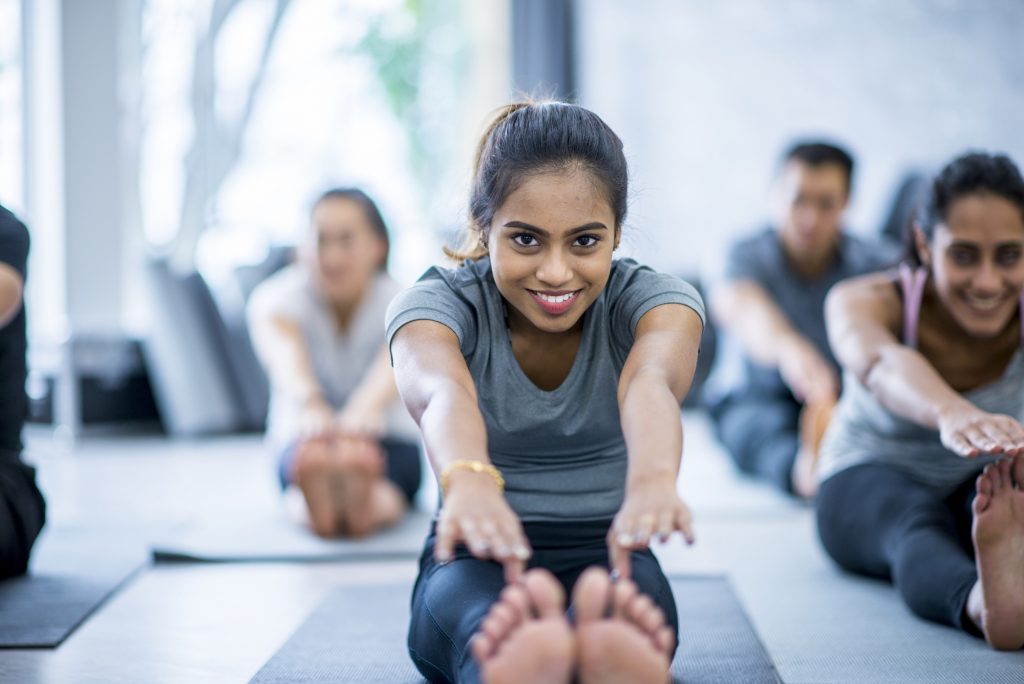The importance of stretching

You might be trying new exercises during lockdown; be that one of our online exercise classes or having a go at running or cycling. Whatever your exercise routine, it’s important to properly warm-up before your workout and spend time stretching as part of your schedule.
The current lockdown might mean you’re spending more time sitting down at home so gentle stretching and movement may be helpful to prevent you from developing poor posture and the aches and pains that can come with it.
Below are some of the key benefits of stretching, as well as guidance on when and how to stretch.
INCREASES FLEXIBILITY
Regular stretching can improve your flexibility. Not only can this help you achieve impressive things, such as doing the splits, it also makes everyday tasks, like picking things up off the floor or putting socks on, easier. Maintaining a level of flexibility will help you stay as independent as possible into later life.
INJURY PREVENTION
Stretches may help prevent injuries. If you’re not very flexible or have muscles that are tight and shortened, it can put you at higher risk of injuring yourself whilst working out.
POSTURE
Maintaining good posture is important to keep you pain free and mobile. Certain lifestyle factors can have an impact on our posture. For example, sitting at a desk can cause a group of muscles, called our hip flexors, to become shortened and tight, leading to hip and/or back pain.
GET MORE OUT OF YOUR WORKOUTS
Working on your flexibility will help you gain a greater range of motion whilst exercising. For example, a squat with good technique will enable you to squat lower, which helps you build muscle, gain strength and burn more calories.
STRESS MANAGEMENT
Stretching can be really beneficial for your mind-set. Unlike intense exercise, during stretching you’re able to focus on your breathing and how our body feels, helping you be more mindful, present and calm. Try a simple online yoga or Pilates class.
HOW TO STRETCH
As a general rule, stretching is most beneficial when you incorporate both static and dynamic stretching.
Static stretching is when you reach and hold a position for a set amount of time. It can help lengthen and counterbalance tight muscles. Your routine, however, should also include dynamic stretching, which combines movement, transitioning from one stretch to the next. Dynamic stretches should be carried out as part your warm up as they help raise your heart rate, elevating your body temperature and blood flow to the muscles.
- Flexibility exercises should be carried out at least two to three times per week
- Stretches should be held for 10-30 seconds, to the point of tightness or mild discomfort
- Repeat each stretch two to four times, accumulating 60 seconds per stretch.
With all stretches, make sure you only stretch to the point of tightness or mild discomfort. Stretching to the point of the muscle being painful indicates you are stretching too intensely, which could lead to injury.

Emma Heaton
North Locality
Gym Instructor/Personal Trainer